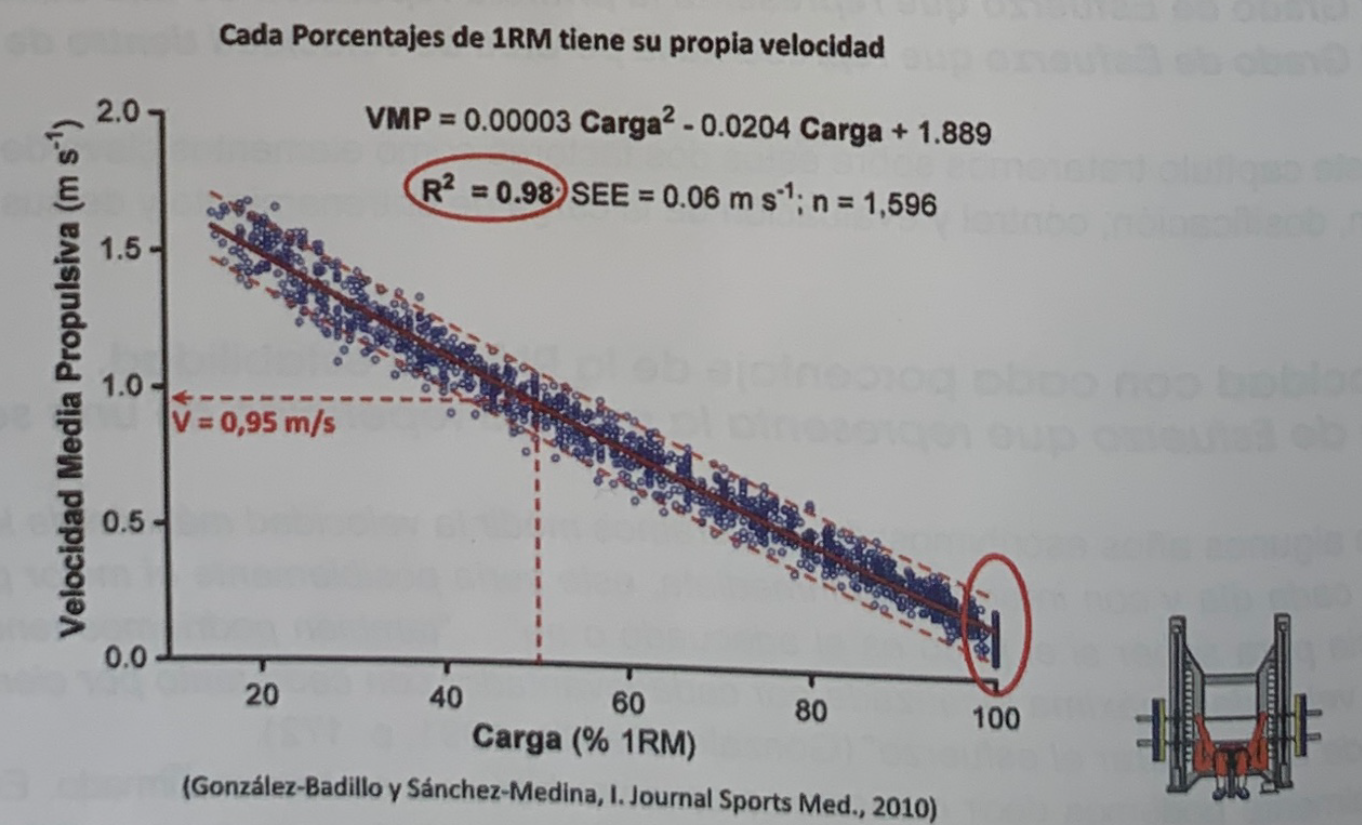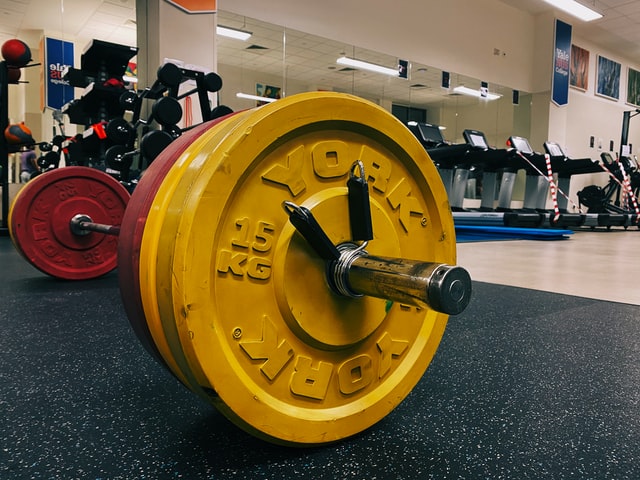The speed of execution in strength training
Especially when talking about time under tension (TBT), the speed of execution in voluntary strength training can have a differentiating effect within the ways of performing the training. The usual proposal to perform the movement slowly “to increase TBT and further improve strength” does not seem to fit the reality.
In this series of articles we deal with some of the most important concepts of strength training, collecting notes from the recently published book Strength, Speed and Physical and Sports Performance written by renowned researchers Juan José González Badillo and Juan Ribas Serna.
SUMMARY
- Training at very low speeds does not seem to be the most positive for improving strength and hypertrophy.
- The higher the speed, the lower the peak force can be reached, but the higher stimulus frequency is necessary to achieve it.
- The execution of the movements at the maximum speed possible allows a greater recruitment of fast fibers, the improvement of the stimulus frequency and the possibility of reaching a greater slope in the force-time curve.
The way to address the problem of the effectiveness of moving loads at the maximum possible speed or more slowly has not always been the most appropriate, which has given rise to contradictory results.
On some occasions, relative loads of different magnitude are compared, which, if they were always moved at the maximum speed possible, the absolute speeds would necessarily be different, so that what is really compared is not the speed of execution, but, in the best case, the relative intensity.
what is really compared is not the speed of execution, but, in the best of cases, the relative intensity
In most cases, training is performed until exhaustion (muscular failure), which necessarily leads to a large proportion of the repetitions being “performed at very low speed, so the average speed of the group that performs the repetitions at the maximum possible speed is very close to that corresponding to the group that performs the repetitions at the slowest speed, and even both groups will perform many of the repetitions at the same speed, since the last repetition is necessarily done at the speed typical of the RM of the corresponding exercise (Sánchez-Medina and and González-Badillo, 2011; González-Badillo et al., 2017) and the last 2-3 repetitions prior to failure would also be done at a very low speed and similar for both groups .
The final result is that there would hardly be any differences between the two groups, so there is not a sufficient maximization of the variance and the results would tend to be practically the same.

Another important problem is that when attempting to compare execution speeds, in many cases neither of the two groups performs the movement at the maximum speed possible, which means that the conditions to verify the true effect of speed do not exist, because at speeds Intermediate conditions do not exist for the “maximum speed” possible execution (force production in unit time, recruitment of fast fibers, lowering of the activation threshold…) What is usually done is to mark some times of execution, not the minimum possible, for the eccentric and concentric phases.
In line with the above, new problems are added to the aforementioned problems. Only if the loads are light or medium and few repetitions are made in the series, it is possible to maintain a certain movement speed constant, as long as this is not the maximum possible.
When trying to compare the execution speeds, in many cases neither of the two groups performs the movement at the maximum possible speed
But if you get to the muscle failure, as usual, it is not possible to maintain the same intermediate speed during all the repetitions, because as just indicated, you will always finish at the lowest possible speed in the exercise in question, regardless of what the speed was. initial velocity. As a consequence, neither the maximum speed is compared with other lower speed values nor are certain intermediate speed values maintained, always very close to the mean speeds of the different groups.
To give an example, one can analyze the study by Munn et al. (2005), published in MSSE and widely cited in issues related to the effect of execution speed. Four groups were formed, two “fast” and two “slow”, which performed elbow flexion with a load of 6-8RM. The two “fast” groups did 1 or 3 series at a pace of 1 s in the eccentric phase and another in the concentric phase, and the two “slow” groups also did 1 or 3 series at 3 s each phase. Recovery between sets was 2 minutes.
It is said in the study that the goal was to complete sets of 6-8RM with a load equivalent to 80% of 1RM. The first problem that we face is to know how to determine in each session the load that allows us to do the same repetitions with the same percentage with such different speeds of execution. Secondly, it is impossible to maintain the planned speeds if muscular failure is reached, because for this, all the groups would have to do their repetitions at the speed of the RM of the elbow flexion exercise, something that, obviously, is not possible. has done (nor would it make sense to do so, because it would mean overriding the layout).
In addition to the above, in no case has the movement been made at the maximum speed possible, which practically makes any design that tries to assess the effect of execution speed lose all validity, since this level —maximum speed— of the The independent variable “speed” must always be present if you want to investigate the effect of execution speed.

This is so because the effect of any velocity value would always have to be compared with the effect of the “maximum possible velocity” value. This would make it possible to check if any non-maximum speed value is greater than the maximum speed or not, and if, hypothetically, there was or was not a curvilinear, or linear, relationship between execution speed and performance.
But comparing non-maximal speed values to each other without including “maximum speed” is meaningless, except that for some, “you should never train at the maximum speed possible”, which seems quite far from the truth. If the results of this study are analyzed, it is indicated that a series at high speed (1 s in each phase) is superior to doing a series at low speed (3 s in each phase) but that doing three series at 1 s compared to 3 s does not present significant differences between them.
In addition, it is indicated that doing 3 series has a greater effect than 1 series at both speeds. It is recommended that “if a series is done, it should be done at high speed (it would only be valid for a time of 1 s in elbow flexion) and that if 3 series are done it is indifferent to doing it at one speed or another”. The conclusions and practical applications are, to say the least, strange: why does a series performed at high speed produce a greater strength gain than a series at low speed and when doing three series there are no differences?
The design problems that have been commented could be at the base of some contradictory and unexplained results. Only two probable explanations are pointed out, which are not given in the text of the study:
1) the probability that the necessary progressive similarity in the speed of execution of all the groups when performing the exercises until failure has caused the greater equality in the stimulus at the end of three series than having done only one series,
2) the probability that only 2 minutes of recovery between series is a very short recovery time and could have caused greater fatigue in the “fast” group than in the slow group, since at a higher speed of execution for the same number of repetitions , the greater the fatigue (González-Badillo et al, 2014; Pareja-Blanco et al., 2014), which could have canceled out the probable greater effect produced by execution at higher speed. A 4-5 minute recovery after efforts to failure (if they were real) would most likely have modified the effects.
The probability that carrying out movements at the maximum possible speed is more harmful for physical and sporting performance than doing them at non-maximum speeds can be explained by the numerous advantages that are observed when actions are carried out at the maximum possible speed.
It has been observed that performing exercises at very high speed, high concentrations of testosterone are reached (Crewther et al., 2006). It has been proposed that this type of training could demand a high consumption of testosterone, so it is likely that a high absolute speed of execution has an effect on this hormone.
performing exercises at very high speed of execution in training, high concentrations of testosterone are reached
Indeed, the high effect on testosterone when performing exercises with light loads (30-50% of 1RM) (Crewther et al., 2006) can be explained by the fact that this hormone not only contributes to the development of fast fibers, Rather, it influences the functioning of these fibers when performing high-speed actions, such as jumping or sprinting (Viru 8 Viru, 2005).
The speed of execution could influence both the type of fibers recruited and the degree of metabolic stress. The greater speed of execution would allow the recruitment of fast fibers, and the slower speed could allow greater hypertrophy due to greater metabolic stress. However, for the same number of repetitions, not to failure, performing the movement at the maximum speed possible tends to generate greater fatigue and greater metabolic stress than doing it at 50% of maximum speed (Pareja-Blanco, Rodríguez-Rosell , Sánchez-Medina, Gorostiaga, González-Badillo, 2014), apart from offering better results in strength.
Training at very low speeds does not seem to be the most positive for improving strength and hypertrophy (Neils, Udermann, Brice, Winchester, McGuigan, 2005; Toigo 8 Boutellier, 2006).
Carrying out actions at the maximum speed possible generates rapid calcium release and withdrawal processes, which corresponds to a calcineurin (Cn) inhibition signal, which is considered a critical regulator in the calcium-derived signal cascade. to the genetic system for the expression of fast or slow fibers.
Specifically, Cn has been considered as an activator of slow fibers and an inhibitor of fast fibers (Chin et al., 1998). When the efforts are of short duration and intermittent, which require rapid and high release of calcium and rapid withdrawal of the same, the activity of Cn is inhibited and fast fibers are expressed, which are determinant for performing actions at high speed, which characterizes to most sports disciplines.
When displacing a load at the maximum possible speed, the stimulus frequency reaches its maximum values, which plays an important role in the slope of the force-velocity curve or RFD. In fact, when faced with different loads (absolute or relative), the higher the speed, the lower the force peak can be reached, but the greater frequency of stimulation is necessary to achieve it (de Hann, 1998).

In addition, the greater the slope of the force-time curve, the more the force threshold for recruiting MUs is reduced (until reaching the zero value of force) and the greater the number of MUs recruited (Desmedt and Godaux 1977). According to Desmedt and Godaux (1979), this could be applied to high speed concentric actions such as throws and jumps and when moving a load at the highest possible speed.
In addition to promoting faster motor unit recruitment, high-velocity training allows for more frequent double unloading (doublets) and an increase in the motor unit unloading rate, improving force production in unit time (Van Cutsem et al., 1998), which may be the basis of a greater improvement in performance when training at the maximum possible speed.
Executing the movements at the maximum speed possible allows a greater recruitment of fast fibers, improvement of the stimulus frequency and the possibility of reaching a greater slope in the force-time curve.
Therefore, the execution of the movements at the maximum possible speed allows a greater recruitment of fast twitches, the improvement of the stimulus frequency and the possibility of reaching a greater slope in the force-time curve, all of which is decisive in performance. sports in general, and especially when it is necessary to carry out actions at high speed values or at the maximum possible speed.
In the article on training to muscular failure The design and results of two studies on TBT, one with the bench press exercise (González-Badillo et al., 2014) and the other with the squat (Pareja-Blanco et al. 2014), have been described in which actually compares the effect of performing all the repetitions at the maximum possible speed or doing it at half that speed.


















